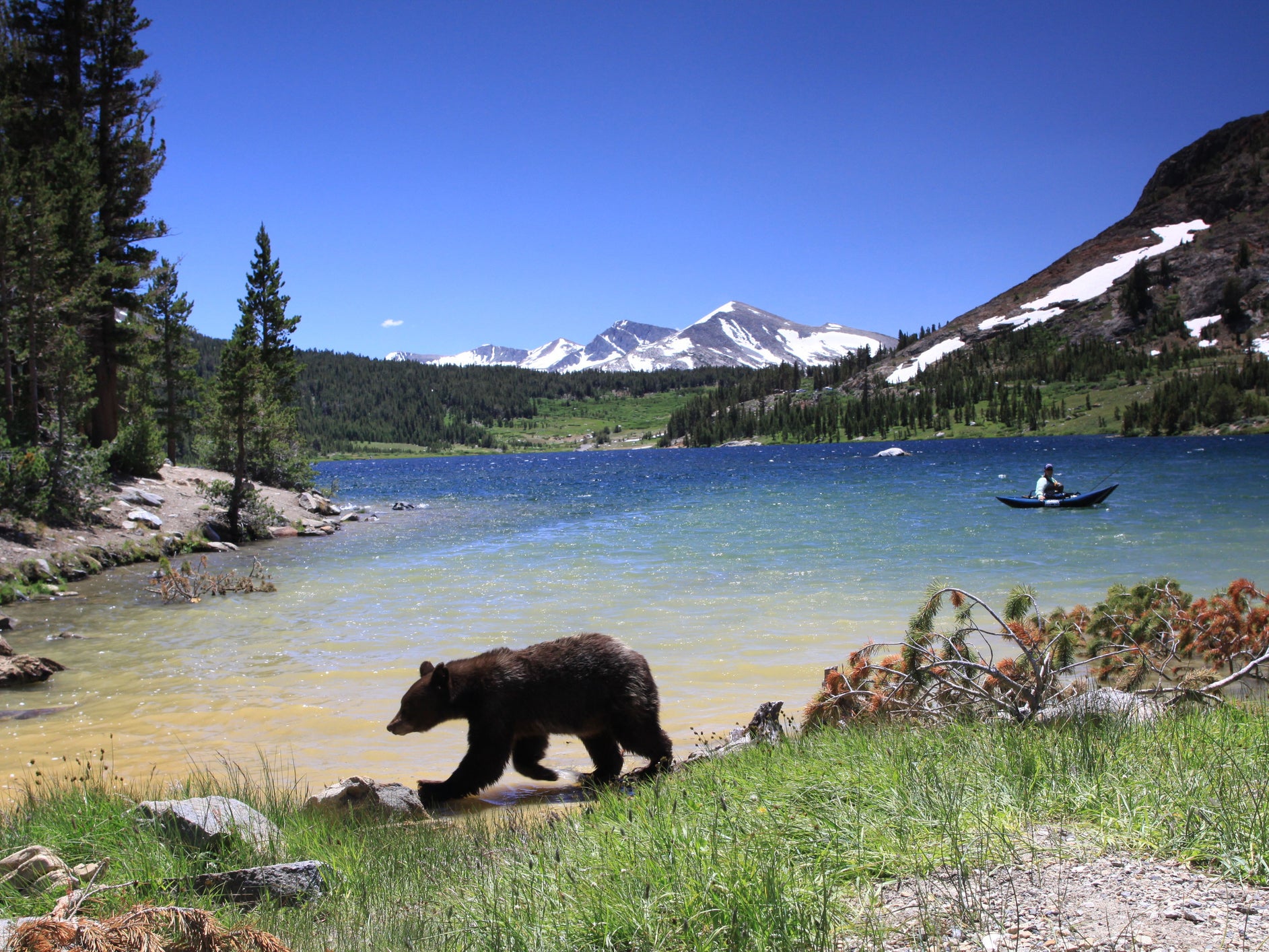Coronavirus: Bears, coyotes and wildcats reclaim US national parks as people stay away during lockdown
Animals have free-run of parks normally packed with tourists
Your support helps us to tell the story
From reproductive rights to climate change to Big Tech, The Independent is on the ground when the story is developing. Whether it's investigating the financials of Elon Musk's pro-Trump PAC or producing our latest documentary, 'The A Word', which shines a light on the American women fighting for reproductive rights, we know how important it is to parse out the facts from the messaging.
At such a critical moment in US history, we need reporters on the ground. Your donation allows us to keep sending journalists to speak to both sides of the story.
The Independent is trusted by Americans across the entire political spectrum. And unlike many other quality news outlets, we choose not to lock Americans out of our reporting and analysis with paywalls. We believe quality journalism should be available to everyone, paid for by those who can afford it.
Your support makes all the difference.Yosemite National Park in California’s Sierra Nevada mountains is among the world’s most famous protected tracts of land, and attracts over 4 million visitors a year – normally.
But amid the coronavirus lockdown, the usually teeming park has been left largely devoid of human visitors, a sudden change which has allowed the park’s diverse array of fauna to spread out into areas they would seldom be seen.
The national park has been closed to the public since 20 March, and in that time animals have rapidly taken advantage of the opportunity to spread into areas normally frothing with humans and their vehicles.
This has happened before, during US government shutdowns in 1990, 1995, 2013 and 2019, but the 2020 shutdown is remarkable for being the longest on record.
Yosemite National Park posted a video of coyotes, ravens and deer roaming the deserted park, which they said offered “a glimpse of the recent tranquility in the Valley, and how several four-legged friends are taking advantage of the quiet”. In another post they added photographs of black bears.
“While so much has changed for humans in recent weeks, it’s reassuring to see that nature carries on as it always has. Spring seems to be slowly creeping into the valley, the sun finally emerging after a week or two of rain and snow. Waterfalls are gradually picking up momentum, and wildlife is becoming more active, perhaps enjoying having the park mostly to themselves,” a Facebook post accompanying the video said.
Inside the park a skeleton crew of workers remain, who are delighted to be sharing the park with the hitherto more private animals.
Greater numbers of bears, bobcats, coyotes, and deer have all been seen in recent weeks in areas where they would not normally be found, such as close to buildings and along roadways.
Yosemite hotel worker Dane Peterson told the LA Times: “It’s not like they aren’t usually here. It’s that they usually hang back at the edges, or move in the shadows.”

Char Miller, a historian at Pomona College in Claremont, said the park is probably now very similar to how it appeared to visitors in the 19th century.
He told the paper early visitors such as writer Alice Ives Van Schaack visited Yosemite in 1871 and wrote of her experience of the natural wonders: “I felt Heaven itself could not be much lovelier.”
Those who remain in the park fear “people who are from the city” visiting their second homes, and risk bringing coronavirus into the park boundaries. Currently, those with property in the national park are allowed to enter and exit.
But the animals’ access all areas pass is set to be revoked in coming weeks as authorities implement lockdown-easing measures to reopen the park.
Similar lockdowns at other national parks in the US, including at Yellowstone and Death Valley also prompted the wildlife to spread into the areas abandoned by humans.
Yellowstone National Park, which stretches into Wyoming, Montana and Idaho, reopened on Monday. On Wednesday a woman was hospitalised after being injured during an encounter with a bison.
“A female visitor was knocked to the ground and injured by a bison,” the National Park Service said in a statement.
In the UK, those looking after closed historic houses, castles, parks and gardens have similarly reported sightings of wildlife emboldened to reclaim now-undisturbed surroundings under lockdown.
Peregrine falcons have been seen nesting on the ruins of Corfe Castle in Dorset, while pied flycatcher birds visiting nest boxes in Lydford Gorge.
Gardeners at Ham House in London have spied small owls venturing further into the garden from nearby river meadows and curlews – the largest European wading bird recognisable for its long curving bill – have been heard in the Peak District.

Join our commenting forum
Join thought-provoking conversations, follow other Independent readers and see their replies
Comments